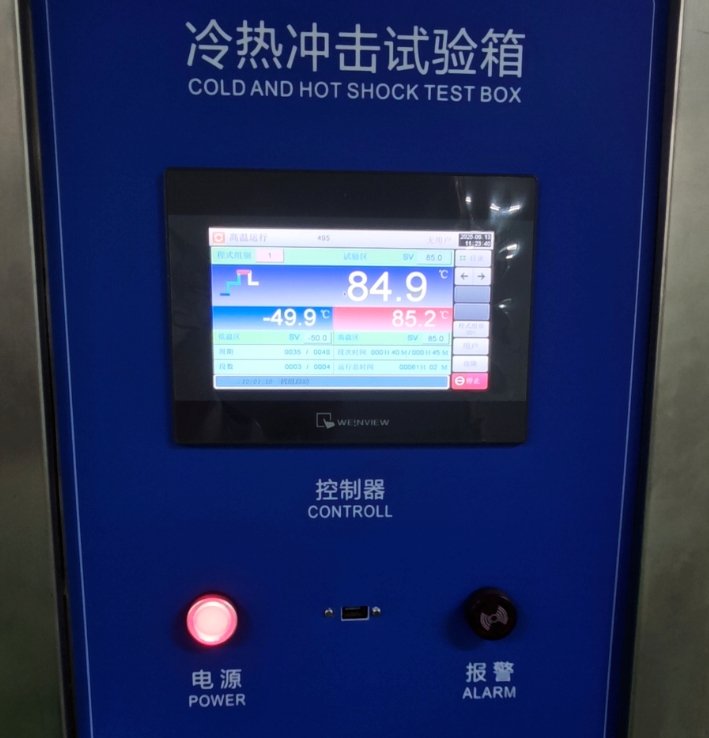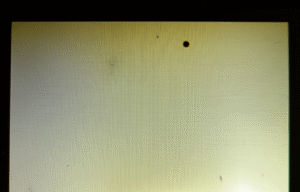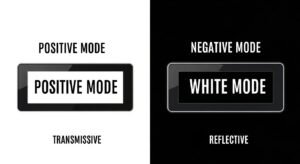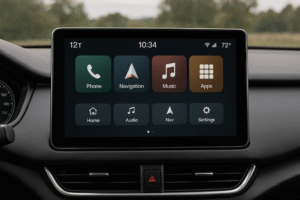
The liquid crystals that create the image are sensitive, and when temperatures get too high or too low, they stop working correctly. This isn’t just an inconvenience; for a business owner whose products are used outdoors, a failing display can lead to customer complaints, costly returns, and a damaged brand reputation. But what if you could prevent this entirely by choosing the right LCD module from the start, one perfectly matched to the environment your product will live in?
The safe operating temperature for an LCD module depends entirely on its grade and intended application. There is no single temperature range for all LCDs. Standard commercial displays typically operate from 0°C to 50°C, while industrial-grade and wide-temperature modules are designed for harsher conditions, often ranging from -20°C to 70°C or even -30°C to 85°C.
I’ll never forget a client I worked with years ago. They were developing a new line of outdoor payment terminals for use across the United States, including hot states like Arizona. To keep costs down, they initially chose a standard commercial-grade display. The prototypes worked fine in the lab, but the first summer in the field was a disaster. We got calls about screens turning black under the desert sun. It led to a massive and expensive recall. That experience taught us both a hard lesson: when it comes to LCDs, matching the temperature specification to the real-world environment isn’t just a technical detail—it’s one of the most critical decisions you can make for your product’s success.
What Are the Standard Operating Temperature Ranges for LCD Modules?

When you start sourcing LCDs, one of the first things you’ll notice is that they are categorized by their operating temperature range. This isn’t just a minor feature; it reflects the chemistry of the liquid crystal, the quality of the polarizers, and the overall robustness of the module. Understanding these categories is the first step in choosing a display that won’t fail you.
The most common categories are commercial and industrial grade. Commercial-grade modules are built for stable, indoor environments, while industrial-grade or wide-temperature modules use specialized materials to function reliably in more extreme heat and cold.
Commercial Grade LCD Temperature Specifications
Think about the electronics in a typical office: computers, printers, and phones. These products exist in a climate-controlled space where the temperature rarely fluctuates. Commercial-grade LCDs are designed for exactly this kind of environment.
They use a standard liquid crystal fluid and components that are cost-effective but not built for resilience against extreme temperatures. Pushing them outside this range can lead to performance issues or even permanent damage(The Vital Role of LCD Modules in Commercial Appliances).
| Grade | Typical Operating Range | Typical Storage Range | Common Applications |
|---|---|---|---|
| Commercial | 0°C to 50°C | -10°C to 60°C | Office equipment, indoor signage |
Industrial and Wide Temperature LCD Modules
Now, think about my client. He builds displays for bicycles, which can be left in a hot car in July or ridden on a chilly morning in the fall. A commercial-grade display wouldn’t last a season. For applications like these, you need an industrial or wide-temperature module.
These displays use a special liquid crystal formula with a wider operating range. The polarizers, sealants, and other components are also selected to withstand thermal stress. As you might expect, they cost more, but that investment buys reliability. At my company, Hua Xian Jing, a huge part of our ODM/OEM service is helping clients navigate this choice. We don’t just sell a part; we analyze the end-use case to ensure the module can handle the environment, from factory control panels in Germany to outdoor devices in America(How Are Embedded LCDs Used in Human-Machine Interfaces (HMIs) for Industrial Control Systems?).
| Grade | Typical Operating Range | Typical Storage Range | Common Applications |
|---|---|---|---|
| Industrial | -20°C to 70°C | -30°C to 80°C | Factory automation, outdoor kiosks, vehicle displays |
| Automotive/Wide | -30°C to 85°C | -40°C to 95°C | Automotive dashboards, military equipment |
How Do Temperature Extremes Affect LCD Module Performance?

The “LC” in LCD stands for liquid crystal. This material is a special state of matter that is sensitive to temperature. Its molecules must stay in a precise alignment to properly twist and untwist, allowing light to pass through or be blocked. When the temperature gets too far outside the intended range, this delicate mechanism breaks down.
Extreme heat causes the liquid crystal to lose its structure, turning the display black. Extreme cold increases the liquid crystal’s viscosity, causing slow response times and ghosting.
What Happens When LCD Modules Get Too Hot?
Every LCD has a “clearing point.” This is the temperature at which the liquid crystal material loses its ordered, crystalline properties and becomes a simple, isotropic liquid. When this happens, the molecules can no longer control the light passing through them, and the screen will appear black or dark.
For most displays, this effect is temporary. Once the module cools down below its clearing point, the display will usually function again. However, prolonged or repeated exposure to extreme heat can cause permanent damage.
- Polarizer Damage: The polarizing films can be permanently “burned” or discolored(Why Do IPS LCD Screens Contain Polarizing Filters Inside?).
- Seal Failure: The seal that contains the liquid crystal can weaken, leading to leaks and screen failure().
- Dark Spots: Permanent dark spots or “blotches” known as mura can appear on the screen.
What Are the Effects of Cold Temperature on LCD Displays?
As the temperature drops, the liquid crystal fluid becomes thick and viscous, like honey in a refrigerator. This has a direct impact on performance.
The most noticeable effect is a drastic increase in response time. The molecules can’t switch states quickly, so when the image changes, you see a “ghost” or trail of the previous image. This makes videos or fast-moving graphics look blurry and unreadable. Contrast also suffers in the cold. In very extreme cold, below the specified storage temperature, the liquid crystal can freeze. This can cause the glass substrates to crack, permanently destroying the display.
What Causes LCD Module Temperature Problems?
When an LCD fails due to temperature, it’s easy to blame the weather. But the ambient temperature is only part of the story. The display’s own components and its enclosure create a microclimate that can be much more extreme than the environment outside.
LCD temperature issues are caused by a combination of heat generated internally by its own components, like the backlight, and external environmental factors, such as direct sunlight and poor ventilation.
Internal Heat Generation Sources
An LCD module is an active electronic device, and it generates its own heat during operation.
- The Backlight: This is usually the biggest source of heat. The LEDs or CCFLs that illuminate the display produce a significant amount of thermal energy. A brighter screen means more heat(LED Backlight Technology Analysis: CCFL, WLED, DLED, ELED, and FALED).
- Driver ICs: The chips that control the individual pixels on the screen generate heat as they work(How Should You Drive Backlight in an Embedded LCD Display?).
- Power Supply Circuitry: The components that convert and regulate power for the display also contribute to the internal heat load(How can I reduce LCD power consumption in embedded systems?).
External Environmental Factors
The world outside the device adds to the thermal challenge.
- Ambient Temperature: The baseline air temperature of the operating environment.
- Direct Sunlight (Solar Load): This is a huge factor for outdoor products. A display sitting in direct sun can absorb solar radiation and become much, much hotter than the surrounding air.
- Enclosure Design: This is a critical, and often overlooked, factor. A sealed, poorly ventilated product enclosure will trap all the heat generated internally, causing temperatures to rise quickly. A good enclosure design is essential for thermal management.
How Can You Prevent LCD Module Temperature Damage?
After seeing so many projects struggle with temperature, I’ve learned one thing: prevention is everything. You cannot fix a heat-damaged display, and you can’t make a standard display work in the freezing cold without the right hardware. The solution is to plan for temperature management from the very beginning of the design process.
To prevent temperature damage, you must select a module with the correct temperature specification, implement effective heat management in your product design, and use protective measures like heaters for cold environments.
What Are the Best Practices for Heat Management?
Getting heat away from the LCD is key to its survival in warm environments. There are several ways to do this.
| Method | Description | Best For |
|---|---|---|
| Passive Cooling | Using heatsinks, thermal pads, and ventilation to dissipate heat without using power. | Most applications with moderate heat loads. |
| Active Cooling | Using fans or heat pipes to actively move heat away from the display. | High-power, high-brightness applications. |
| Optical Bonding | Fills the air gap between the LCD and cover glass, improving heat transfer out of the display. | Outdoor displays in direct sunlight. |
| Backlight Control | Dimming the backlight when the temperature gets too high to reduce internal heat generation. | Battery-powered and enclosed devices. |
At Hua Xian Jing, we often use optical bonding for clients like Mark who are building outdoor products. It not only makes the screen more rugged and sunlight-readable but also provides a crucial pathway for heat to escape.
How Do You Protect LCD Modules from Cold Damage?
Protecting a display from the cold requires a different approach. You need to add heat.
- Integrated Heaters: The most effective solution is a transparent film heater, often made of Indium Tin Oxide (ITO), that is laminated directly onto the display. When the temperature drops, a sensor activates the heater, warming the liquid crystal enough to keep it within its operating range.
- Choosing the Right Liquid Crystal: The formulation of the liquid crystal itself is critical. Wide-temperature modules use a fluid that is naturally less viscous at low temperatures and has a lower freezing point. This is a core part of the custom OEM/ODM services we offer; we can work with our partners to select the perfect fluid for a specific temperature requirement.
What Are the Signs of Temperature-Related LCD Damage?
It’s important to be able to tell the difference between a temporary performance issue and permanent damage. If a display is simply too hot or too cold, it will likely recover once it returns to its normal operating range. But if it has been pushed too far, the damage can be irreversible(How to Troubleshoot and Test Your Monochrome LCD Module).
The most common signs of permanent heat damage are dark spots or discoloration that persist after cooling. The main indicator of a cold-related issue is a slow response time, but physical damage like cracks can occur if the display freezes.
How Do You Identify Heat Damage in LCD Modules?
Look for these signs after a display has been exposed to extreme heat:
- Permanent Discoloration: The screen may have a yellowish or brownish tint, especially in the areas that got hottest.
- Blotches or Mura: These are dark or uneven patches that are visible on a uniform background and do not go away.
- Bubbles at the Edge: The sealant around the perimeter of the glass may fail, creating bubbles or what looks like a leak.
- Polarizer Damage: The front surface of the screen might look “burnt” or cloudy.
What Are the Indicators of Cold-Related LCD Issues?
Cold-related problems are primarily performance-based, but permanent damage is possible.
- Slow Response Time (Ghosting): This is the most common temporary issue.
- Low Contrast: The screen may look washed out.
- Non-Uniformity: Parts of the screen may update slower than others, creating a patchy look.
- Cracked Glass: This is the worst-case scenario. If the liquid crystal freezes and expands, it can physically crack the glass substrate, which is unrepairable.
Which LCD Module Temperature Range Should You Choose?
This is the central question for any product designer. Choosing a module that is underrated for its environment will lead to failure. Choosing one that is overrated means you are spending extra money for performance you don’t need. The key is a careful analysis of your product’s life cycle.
You should choose a temperature specification by thoroughly analyzing your product’s end-use environment, including minimum and maximum temperatures, sun exposure, and internal heat generation. Always add a safety margin.
How Do You Select the Right Temperature Specification?
When a client comes to me for a custom LCD, I walk them through a checklist to determine the right temperature grade.
- What is the absolute maximum and minimum ambient temperature the product will be stored and operated in? Be realistic. Think about a product sitting in a black car in Phoenix or in a warehouse in Montreal.
- Will the device be exposed to direct sunlight? If yes, you must account for solar load, which can add 15-20°C or more to the effective temperature.
- How much heat does your own device generate? You need to measure the internal temperature of your product’s enclosure during operation.
- What are the consequences of a screen failure? Is it an inconvenience, or is it a safety-critical failure (e.g., a medical device or automotive display)? The higher the risk, the wider the safety margin you should have.
What Are the Special Requirements for Extreme Environments?
Some applications go beyond standard industrial or automotive ranges. Think of equipment for oil and gas exploration, deep-sea research, or military field operations. These situations often require a systems-level approach.
- Fully Integrated Thermal Systems: The solution may involve a display module with an integrated heater and temperature sensor, all managed by a controller that also operates a cooling fan.
- Ruggedized Enclosures: The entire product housing must be designed to either insulate from cold or dissipate heat efficiently.
- Deep Customization: For these projects, an off-the-shelf module is rarely the answer. You need to work directly with a factory like Hua Xian Jing. We have the capability to build a fully custom solution, from the liquid crystal fluid itself to the integrated thermal management hardware.
How Do You Implement Temperature Monitoring and Control?
For high-reliability products, it’s not enough to just choose the right module. You need an active system to monitor the temperature and react before damage can occur. This creates a closed-loop system that protects your investment.
You can implement temperature control by using thermistors or integrated sensors to monitor the display’s temperature and using that data to activate heaters in the cold or cooling fans and backlight dimming in the heat.
What Temperature Monitoring Solutions Are Available?
Monitoring is simple to implement.
- Thermistors: These are small, inexpensive temperature sensors that can be placed on the back of the LCD module, near the backlight driver, or on other hot spots. Their resistance changes with temperature, which can be easily read by a microcontroller.
- On-Die Sensors: Many modern display driver ICs and system-on-chips (SoCs) have their own internal temperature sensors that you can access over a digital interface.
What Active Temperature Control Methods Work Best?
The data from your sensors feeds a control loop.
- For Cold: When the thermistor reading drops below a certain threshold (e.g., 5°C), the system controller sends power to the transparent film heater. It keeps the heater on until the temperature is back in the optimal range.
- For Heat: When the temperature exceeds a threshold (e.g., 65°C), the controller can take several actions. It might turn on a small cooling fan. A simpler and very effective method is to automatically dim the backlight. Since the backlight is the main heat source, reducing its brightness can significantly lower the temperature. In extreme cases, the system can shut down the display entirely to prevent damage.
What Are the Best Practices for LCD Module Temperature Management?
Over my 13 years in this industry, I’ve seen it all. The successful projects are the ones that treat temperature as a primary design parameter, not an afterthought. It’s about a holistic approach that covers selection, design, testing, and operation.
The best practice for LCD temperature management is to address it early in the design phase by selecting the right module, engineering an enclosure with good thermal properties, and implementing active controls when necessary.
How Do You Maintain Optimal Operating Conditions?
Success starts long before the product ships.
- Design for Temperature: This is the most critical step. Work with your supplier to choose the right module. Design your product’s enclosure to provide ventilation or a path for heat to escape.
- Test Thoroughly: Don’t just trust the datasheet. Put your final product in an environmental test chamber and run it through temperature cycles from its minimum to maximum rated temperature to see how it really behaves.
- Educate Your Users: Your product’s manual should clearly state the safe operating and storage temperature ranges.
What Should You Do When Temperature Limits Are Exceeded?
If your system detects that the temperature is outside the safe operating range, it should be designed to protect itself.
- Protective Shutdown: The best response is an automatic, graceful shutdown of the display (or at least the backlight) to prevent damage. The system can display a warning message before doing so, if possible.
- Post-Event Inspection: If you know a product has been stored at temperatures well beyond its storage limits (e.g., left in a frozen car overnight), it should be allowed to return to room temperature slowly and then inspected for any signs of permanent damage before being used.
Conclusion
Choosing an LCD module is about much more than screen size and resolution. As we’ve seen, operating temperature is one of the most critical specifications that will determine the reliability and lifespan of your product. From a commercial display in an air-conditioned office to a wide-temperature module in an outdoor kiosk, making the right choice is fundamental. It requires you to understand the sources of heat, the effects of cold, and the tools available for thermal management.
Ignoring temperature can lead to costly failures, but addressing it head-on during the design phase ensures your product will perform reliably for your customers, no matter the environment. If you are developing a product for a challenging environment and need a display solution you can count on, don’t leave it to chance. My team and I at Hua Xian Jing have been solving these exact problems for over a decade.
FAQ
Can LCD modules be damaged by brief temperature excursions outside their operating range?
Brief temperature excursions rarely cause permanent damage to LCD modules, but repeated exposure can shorten their lifespan. Commercial LCD modules can typically handle short periods outside their 0°C to 50°C range without permanent damage, while industrial grade modules offer better tolerance.
What should I do if my LCD display shows slow response times in cold weather?
Allow the LCD module to gradually warm up to its operating temperature before expecting normal performance. Response times can increase from milliseconds to several seconds in cold conditions due to increased liquid crystal viscosity, but this effect is usually reversible once the display returns to normal temperature.
Do LCD modules require different contrast settings at different temperatures?
Yes, LCD modules require voltage compensation as temperature changes to maintain optimal contrast levels. The driving voltage needs to be increased at lower temperatures and decreased at higher temperatures to maintain consistent display quality, which is why many modules include automatic temperature compensation circuits.
Can I use a standard LCD module outdoors if I add heating and cooling systems?
Adding thermal management systems can extend an LCD module’s usable temperature range, but it’s better to select a module with appropriate specifications for your environment. While heaters and cooling fans can help, they add complexity, power consumption, and potential failure points compared to choosing an industrial-grade module designed for your specific conditions.
Will my LCD module warranty be voided if it's damaged by temperature exposure?
Most LCD module warranties exclude damage from operation outside specified temperature ranges. Temperature-related damage is typically considered misuse rather than manufacturing defects, so it’s crucial to select modules with appropriate temperature specifications for your application and implement proper thermal management.







